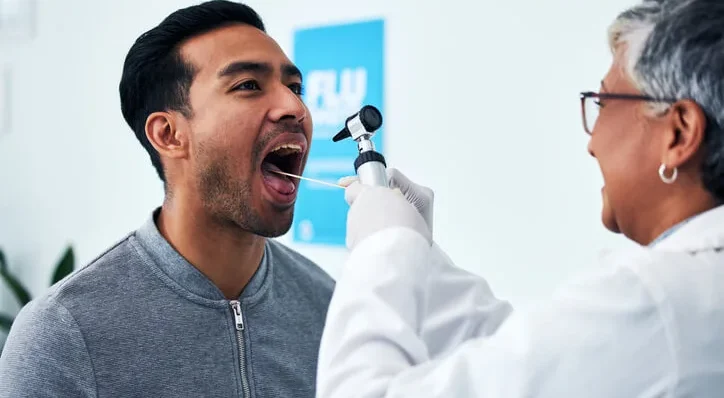Oral cancer detection and diagnosing precancerous mouth lesions early and accurately poses significant challenges. Biopsies, the conventional method, are costly, invasive, and stressful for patients, often leading to complications. Moreover, repeated screenings of the same lesion are impractical with biopsies.
Innovative Noninvasive Test for Oral Cancer Detection and Monitoring
A breakthrough has emerged from a team of researchers, led by a clinician scientist at the Case Western Reserve University School of Dental Medicine. They’ve unveiled a noninvasive, cost-effective test for oral cancer detection, precancerous lesion monitoring, and biopsy guidance.
Their study, recently published in Cell Reports Medicine on March 4, introduces a scoring system tied to the levels of two proteins found in cells obtained from suspicious oral lesions. These samples were collected from patients at dental clinics or the ear, nose, and throat department at University Hospitals (UH).
One of these proteins, human beta defensin 3 (hBD-3), exhibits high expression in early-stage oral cancer, whereas the second protein, hBD-2, remains low or unchanged. By comparing the ratio of hBD-3 to hBD-2 in the lesion site against the opposite, normal site, researchers developed a scoring system called the beta defensin index (BDI). A BDI score exceeding a predefined threshold indicates cancer, while a score below suggests otherwise. Quantifying the levels of these proteins and calculating the BDI can be routinely conducted in a laboratory setting.
The validity of BDI was independently confirmed using identical protocols at CWRU/UH, University of Cincinnati Medical Center, and West Virginia University School of Dentistry.
Aaron Weinberg, the study’s lead researcher and chair of the Department of Biological Sciences at the Case Western Reserve School of Dental Medicine, noted the unexpected discovery of hBD-3’s role in promoting tumor growth despite its initial association with wound-healing and microbial elimination. This revelation prompted the investigation into hBD-3’s potential in oral cancer contexts.
Weinberg emphasized the pivotal role of Santosh Ghosh, an instructor at the School of Dental Medicine, in navigating the BDI scoring process.
Oral cancer, comprising approximately 90% of head and neck cancer cases, represents a significant global health burden. Developing nations are experiencing a surge in its incidence. This lab-based approach, now patented, has the potential to drastically reduce unnecessary biopsies in primary care clinics, thereby aiding clinicians in identifying patients who truly require biopsies.
The positive outcomes from this lab-based method have spurred the development of a point-of-care (POC) device in collaboration with Umut Gurkan, a professor at the Case School of Engineering. This POC diagnostic tool, capable of measuring protein ratios, could deliver results directly in clinics within half an hour.
Pending patent approval through Case Western Reserve’s Technology Transfer Office, this POC device could undergo manufacturing and clinical validation, marking a significant advancement in oral cancer diagnosis and management.
Funding for the discovery, clinical validation studies, and POC technology development was provided by various institutions including the National Institute of Dental and Craniofacial Research, National Cancer Institute, Case Coulter Translational Research Partnership, and Ohio Third Frontier Technology Validation and Start-Up Fund.
Source: Science Daily


Реалистичные секс куклы
18 March 2024It was a real pleasure to read your article. You are a very good author. Nice article.
Секс Кукла
18 March 2024It was a real pleasure to read. You are a very good author. Good article.